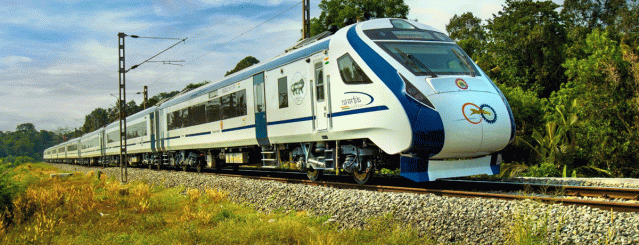India’s electric railway revolution – A greener life, a greener world

By Jeremy Williams
Every day, India electrifies 19.6 kilometres of railway line.
In the last decade the country has electrified 40,000 kilometres of track, and it is due to reach 100% electrification this year, exactly on time.
It’s a remarkable achievement.
With 97% of its broad gauge lines now transitioned, India has the second highest electrification rate of any major rail network in the world. Only Switzerland has more, 100%. By contrast, the UK manages 37%, Australia is at 10%, and the US just below 1%.
A 100 year journey
The journey began in 1925, and it is a hundred years to the day since the first electric train ran in India, a suburban service running into Mumbai.
There were a handful of similar commuter lines at the point that India gained independence, adding up to a total of 388 kilometres.
It then turned to France for inspiration, observing the most successful designs and adopting the system and standards used by the SNCF. A series of five-year plans set out priority lines, with many transitioning straight from steam to electric, cutting out the diesels in the middle to avoid exposure to volatile oil prices.
It was in 2014 that the government ramped up ambitions and committed the funds for a fully electric railway. The pace of change doubled and then doubled again. In 2022-23, India electrified 6,565 kilometres of track – the equivalent of about a third of the UK’s entire network delivered in a single year.

Carbon footprint
Of course, the value of running things on electric power does depend on how you generate the electricity. Over half of India’s electricity comes from coal, but there are three reasons not to dismiss the benefits of electric trains in such a context.
First of all, electric trains are quieter and less polluting. There are immediate gains for air pollution, especially as they pass through urban areas.
Second, electric traction is more energy efficient. Burning stuff to make things go wastes a lot of energy as heat and noise. Electric motors are much more efficient than internal combustion engines, electric trains don’t need to haul their own fuel and they can use regenerative braking.
All in, electric trains have lower emissions than diesel, even when accounting for dirty power stations.
Furthermore, the carbon savings from electrification are improving all the time. In the earliest days of electric trains, they were less efficient, and most electricity was from coal power.
Technological improvements have gone hand in hand with more clean energy in the generation mix, and with every passing year, there’s more renewable energy coming online.
India Railways has ambitious plans to shift to 100% renewable energy, using its surplus land for solar farms.

Solar train stations
By the end of 2023, rooftop solar had been installed on 1,498 stations, and there are solar panels on the trains themselves as well, running the fans and lights.
India Railways isn’t done innovating around low-carbon railways. It is experimenting with direct solar power, which would be a world first. It is currently testing its first hydrogen train, which has twice the power of the other hydrogen train currently running.
Electrification is step one in a broader plan to reach net-zero on the railway network by 2030. Judging by the pace of change on upgrading the track, it looks well within their power.
First published in The Earthbound Report.
Discover more from A greener life, a greener world
Subscribe to get the latest posts sent to your email.







